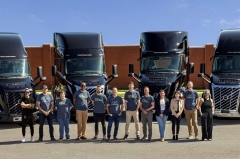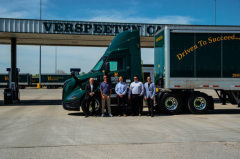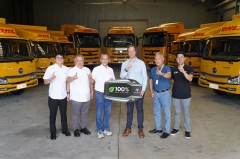
Three major European truck manufacturers recently have announced that they will be working together to create a new charging network for electric trucks. These three companies in question are the Volvo Group, Daimler Truck, and the Volkswagen Group’s Traton Group which includes brands such as Scania and Man brands. They have all signed a joint venture agreement to create a charging network in Europe in 2022.
This joint venture aims to improve the electric vehicle infrastructure as the three companies will install a high-performance charging network for battery electric, heavy-duty long-haul trucks, and coaches. The collective plans to invest a total of $562 million in the venture with each founding partner contributing equally to the tune of about 167 million Euros in the joint venture.
For its infrastructure, the joint venture aims to create a network consisting of 1,7000 charging points on and close to highways as well as other logistic and destination points. The exact locations of these charging stations have yet to be determined, however, the costing has already been drawn up. Per station, it will cost around 300,000 Euros for a DC faster charging point. These charging stations will also be tailored to the region’s 45-minute mandatory rest period after 4.5 hours of driving. The new network will be open for new partners as well as additional investments as the joint venture slowly expands the number of stations in Europe.
While this may just be for the European region, this movement of developing electric vehicle infrastructure could soon make its way into other markets and slowly become mainstream. However, it may still take some time for this kind of technology to reach the Philippine market as the area is only beginning to adapt to the electric mobility movement that is slowly spreading around the world. For now, we will just sit back and wait for local companies to slowly push this technology in the local market.








